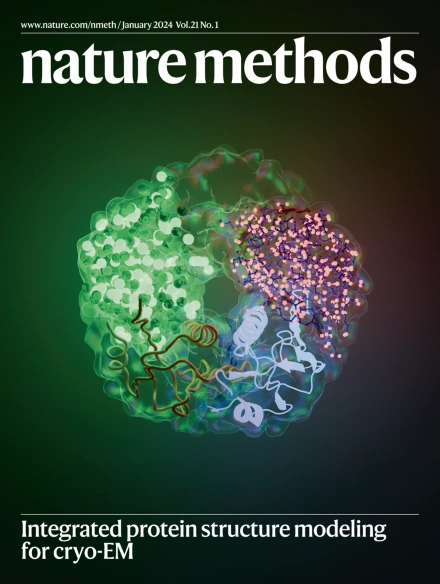A foundation model for joint segmentation, detection and recognition of biomedical objects across nine modalities
IF 36.1
1区 生物学
Q1 BIOCHEMICAL RESEARCH METHODS
引用次数: 0
Abstract
Biomedical image analysis is fundamental for biomedical discovery. Holistic image analysis comprises interdependent subtasks such as segmentation, detection and recognition, which are tackled separately by traditional approaches. Here, we propose BiomedParse, a biomedical foundation model that can jointly conduct segmentation, detection and recognition across nine imaging modalities. This joint learning improves the accuracy for individual tasks and enables new applications such as segmenting all relevant objects in an image through a textual description. To train BiomedParse, we created a large dataset comprising over 6 million triples of image, segmentation mask and textual description by leveraging natural language labels or descriptions accompanying existing datasets. We showed that BiomedParse outperformed existing methods on image segmentation across nine imaging modalities, with larger improvement on objects with irregular shapes. We further showed that BiomedParse can simultaneously segment and label all objects in an image. In summary, BiomedParse is an all-in-one tool for biomedical image analysis on all major image modalities, paving the path for efficient and accurate image-based biomedical discovery. BiomedParse is a foundation model for image analysis that uses a joint learning approach to jointly conduct segmentation, detection and recognition and offer state-of-the-art performance across a wide range of datasets and nine modalities.

九种模式生物医学对象联合分割、检测和识别的基础模型。
生物医学图像分析是生物医学发现的基础。整体图像分析包括分割、检测和识别等相互依存的子任务,而传统方法是将这些子任务分开处理的。在此,我们提出了生物医学基础模型 BiomedParse,它能在九种成像模式中联合进行分割、检测和识别。这种联合学习提高了单个任务的准确性,并实现了新的应用,例如通过文本描述分割图像中的所有相关对象。为了训练 BiomedParse,我们利用现有数据集中的自然语言标签或描述创建了一个大型数据集,其中包括 600 多万个图像、分割掩膜和文本描述的三元组。我们的研究表明,BiomedParse 在九种成像模式的图像分割方面优于现有方法,在不规则形状的物体上有更大的改进。我们还进一步证明,BiomedParse 可同时对图像中的所有物体进行分割和标注。总之,BiomedParse 是一种用于所有主要图像模式的生物医学图像分析的一体化工具,为基于图像的高效、准确的生物医学发现铺平了道路。
本文章由计算机程序翻译,如有差异,请以英文原文为准。
求助全文
约1分钟内获得全文
求助全文
来源期刊

Nature Methods
生物-生化研究方法
CiteScore
58.70
自引率
1.70%
发文量
326
审稿时长
1 months
期刊介绍:
Nature Methods is a monthly journal that focuses on publishing innovative methods and substantial enhancements to fundamental life sciences research techniques. Geared towards a diverse, interdisciplinary readership of researchers in academia and industry engaged in laboratory work, the journal offers new tools for research and emphasizes the immediate practical significance of the featured work. It publishes primary research papers and reviews recent technical and methodological advancements, with a particular interest in primary methods papers relevant to the biological and biomedical sciences. This includes methods rooted in chemistry with practical applications for studying biological problems.
 求助内容:
求助内容: 应助结果提醒方式:
应助结果提醒方式:


